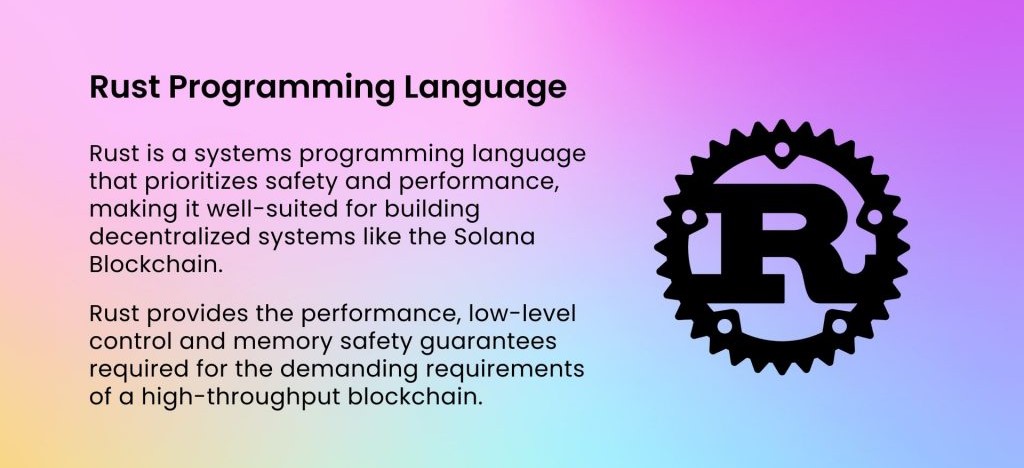Rust Tech Stack in 2024 For Full Stack Development
- Rust Tech Stack in 2024 For Full Stack Development - July 18, 2024
- What Are PWAs & How They Can Boost Your Small Business - June 27, 2024
- MongoDB vs MariaDB : Which One Your Database Needs? - June 5, 2024
Introduction
Rust, a systems programming language that emphasizes safety, concurrency, and performance, has gained significant traction in recent years. This case study explores the adoption of the Rust tech stack by a company, “UG Infosystems” specializing in network security software. The study details the motivation, implementation process, challenges, and benefits realized by integrating Rust into their development ecosystem.

Background
UG Infosystems (UGI) is a technology company founded in 2007 that specializes in providing comprehensive IT services and digital transformation solutions for businesses. UGI provides advanced network security solutions to businesses of all sizes. The company initially built its products using C++ due to its performance capabilities. However, as the complexity of their systems grew, they faced several challenges:
- Memory Safety Issues : Frequent memory leaks and buffer overflows were causing security vulnerabilities and system crashes.
- Concurrency Problems : Handling multiple tasks simultaneously led to data races and other concurrency-related bugs.
- Development Speed : The complexity of managing memory and concurrency in C++ slowed down development and increased the time to market.
Problem Statements
To maintain its competitive edge and improve product quality, UGI needed to :
- Enhance Security : Eliminate memory safety vulnerabilities.
- Improve Performance : Ensure high performance while managing multiple concurrent tasks.
- Accelerate Development : Speed up the development process without compromising on quality.
Solution : Adopting the Rust Tech Stack
After evaluating several alternatives, UGI decided to adopt the Rust tech stack. Rust’s ownership model, type system, and concurrency features aligned well with the company’s requirements.
- Ownership Model : Rust’s ownership and borrowing system ensures memory safety without a garbage collector, preventing common bugs such as null pointer dereferencing and buffer overflows.
- Concurrency : Rust’s concurrency model allows developers to write safe and efficient concurrent code, reducing the risk of data races.
- Ecosystem and Tooling : Rust has a growing ecosystem with tools like Cargo (package manager), Rustfmt (code formatter), and Clippy (linter), which enhance developer productivity.
Implementation Process
The adoption of the Rust tech stack at UG Infosystems was carried out in several phases:
1. Evaluation and Training
- The team evaluated Rust’s suitability by prototyping critical components.
- Comprehensive training sessions were conducted to bring the development team up to speed with Rust’s syntax and features.
2. Pilot Project
- A non-critical component of the software was chosen for a pilot project to test Rust in a real-world scenario.
- The team rewrote this component in Rust, monitored performance, and compared it with the existing C++ implementation.
3. Incremental Adoption
- Based on the success of the pilot project, the team started incrementally rewriting performance-critical and memory-sensitive components in Rust.
- This phased approach minimized risks and allowed the team to gradually build expertise in Rust.
4. Full Integration
- Once the team was confident in Rust’s capabilities, they began using Rust for all new components and features.
- Existing C++ components were maintained but gradually refactored or replaced with Rust equivalents.
Challenges
1. Learning Curve
- Rust’s unique ownership model and strict compiler checks had a steep learning curve.
- The team had to invest time in understanding and adapting to Rust’s programming paradigm.
2. Ecosystem Maturity
- Although Rust’s ecosystem is growing, it was less mature compared to C++ at the time of adoption.
- Some libraries and tools were still under development, requiring the team to build custom solutions or contribute to open-source projects.
3. Integration with Existing Systems
- Interoperability between Rust and existing C++ code required careful handling.
- The team used Rust’s Foreign Function Interface (FFI) to integrate Rust components with the existing C++ codebase.
Benefits
1. Enhanced Security
- Rust’s ownership model eliminated memory safety issues, significantly reducing vulnerabilities and system crashes.
- The team observed a marked decrease in security-related bug reports and incidents.
2. Improved Performance
- Rust’s zero-cost abstractions and efficient concurrency model improved overall system performance.
- The pilot project showed a 20% performance improvement compared to the C++ implementation.
3. Increased Developer Productivity
- Rust’s robust tooling (Cargo, Rustfmt, Clippy) and comprehensive error messages accelerated the development process.
- The team was able to write and maintain code more efficiently, reducing the time to market for new features.
4. Better Concurrency Handling
- Rust’s safe concurrency model enabled the team to handle multiple tasks simultaneously without data races
- This improved the system’s ability to process concurrent network requests efficiently.

Conclusion
The case demonstrates the transformative impact of adopting the Rust tech stack for high-performance system development. By leveraging Rust’s unique features, the company was able to enhance security, improve performance, and accelerate development. Despite initial challenges, the benefits realized made the transition worthwhile.
Rust’s adoption is not limited to large enterprises; small and medium-sized businesses can also gain significant advantages by integrating Rust into their development ecosystems. This case study serves as a compelling example of how Rust can drive innovation, efficiency, and growth in the tech industry.







